For the first time in years, its role has become a topic of furious debate. But what do we talk about when we talk about Nato?
Written by Thomas Meaney, read by Simon Vance and produced by Jessica Beck. Executive producer was Max Sanderson
Mon 16 May 2022 05.00 BST
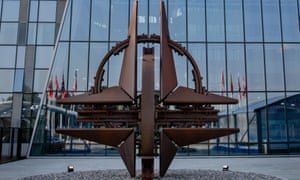

The Nato star sculpture outside its HQ in Brussels, Belgium. Photograph: Bloomberg/Getty Images
How Putin’s invasion returned Nato to the centre stage
For the first time in years, its role has become a topic of furious debate. But what do we talk about when we talk about Nato?
by Thomas MeaneyThu 5 May 2022 06.00 BST
Nato is back. With the invasion of Ukraine, Vladimir Putin has single-handedly revived the fortunes of the North Atlantic Treaty Organisation, returning it to the top of the foreign policy agenda. Nordic states that once prided themselves on independence from the organisation are now eager to join. The German government has pledged an unprecedented increase in defence spending, which means increasing its contribution to Nato. US military strategists dream anew of opening a Nato franchise for the Pacific, while EU bureaucrats plan a new Nato for the internet. Former liberal holdouts and sceptics of the alliance have learned to love Nato in much the same way they learned to love the CIA and the FBI during the Trump years. The old sheriff of the cold war has regained its focus, and, to the surprise of many, has proved itself to be a remarkably spry and capable force in the fight against Russia.
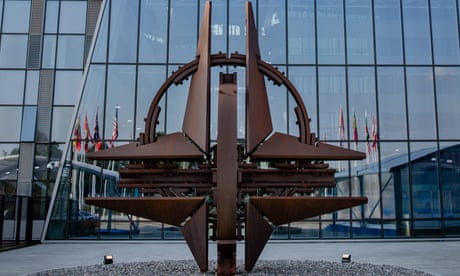
Nato’s return to the spotlight has been accompanied by a renewed debate about its history. Every interested party has a different story to tell. For Moscow, Nato has long been a project to subjugate Russia and reduce its influence to a memory. For Washington, Nato began as a way of protecting western Europeans from themselves and from the Soviet Union, but in the 90s it became a forward operating vehicle for democracy, human rights and capital. For eastern Europeans, Nato is the sacred pledge to keep Russian tanks at bay. For most western European states, Nato has provided a bargain-price American nuclear umbrella that allowed them to fund social welfare rather than armies, when they were not using their Nato obligations to justify austerity. For the rest of the world, Nato was once an Atlantic-based, defensive alliance that quickly transformed into an ever-farther-afield, offensive one.
A striking feature of these well-worn arguments over Nato is that they all assume a high degree of familiarity with the thing itself. For all that it is central to a certain conception of Europe – or even the west – few can say what, exactly, it is. Crammed into a four-letter acronym is something more than a simple military alliance. Nato is no longer particularly “Northern”, nor “Atlantic”, nor bound to a “Treaty”, while calling it an “organisation” almost makes it sound like a charitable enterprise. Part of the reason Nato’s shape can be difficult to discern is that the alliance has, at least in the west, won a long war of public relations. In the 50s, Nato sent travelling “caravans” – mass exhibitions and outdoor movie theatres – into the hinterlands of Europe to explain the benefits of the alliance to sceptical populations. Such a strenuous case for Nato no longer needs to be made, and opposition to it has vastly diminished since the 1980s. What was once presumed to be an artefact of the cold war order sits so comfortably at the heart of the west’s military-political-economic system that it is frequently mistaken for a natural feature in the European landscape.
On paper, Nato is an alliance of 30 nation-states committed to free institutions and bound together by article 5 of its charter, which holds that – albeit conditionally – members will collectively defend any member that is attacked. Born in 1949, Nato sees itself as the younger sibling of other international institutions of mid-century vintage – the UN and the GATT, which became the World Trade Organisation – and takes pride in having kept the European peace for more than half a century. Militarily, if not economically, Nato has largely fulfilled the mission its first secretary general, Hastings Ismay, set out for it: “To keep the Russians out, the Americans in, and the Germans down.”
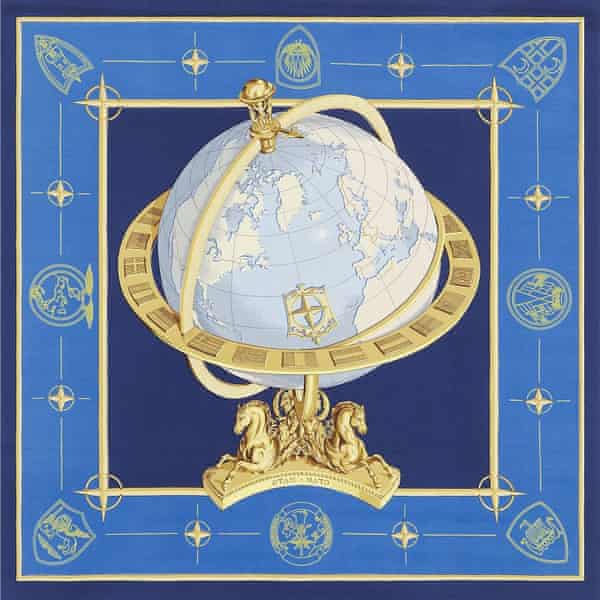
Though primarily a military alliance, Nato is also a culture, or as Nato’s third supreme allied commander, Alfred Gruenther, declared: “Nato is a state of mind.” Nato company towns dot the continent (Brunssum, Ramstein, Geilenkirchen, Oberammergau, Uedem, Aviano, Świętoszów), there are Nato schools for Nato employees’ children and Nato academies and centres where Nato military curriculums are taught (“smart training for smart defence”), the Nato Defense College in Rome, a Nato underground pipeline for jet fuel that runs through Germany, a Nato songbook, a Nato hymn, a Bing Crosby Nato ballad, a Nato phonetic alphabet (“Alpha, Bravo … ”), Nato-funded grants and university chairs, an annual International Model Nato for university students, a Nato Hermès scarf, a Nato golf club in Belgium for handicap 36 and below, and a Nato headquarters in Brussels, which houses the British-funded “counter-propaganda” unit, as well as the Nato museum, or what is known in Nato-speak as an “arts heritage hub,” which exhibits copies of Ancient Greek statuary and a large number of unremarkable wooden desks.
Nato’s budget on paper is a relatively modest €2.5bn, with contributions from all member states, but the $800bn US defence budget guarantees that Nato can spend much of its own funds on bureaucratic upkeep. Despite some nods to how it produces all decisions by “consensus”, Nato makes little attempt to hide the fact of American primacy in the alliance. In the official legal procedure for leaving Nato, the charter declares that a state must declare its intention not to Nato’s secretary general, but to the president of the United States.
In practice, Nato is above all a political arrangement that guarantees US primacy in determining answers to European questions. The political headquarters of Nato are located in a new modernist building in Brussels, but its most significant military command centre is located in Norfolk, Virginia. Every supreme allied commander since 1949 has been an American military officer. Nato itself has no forces of its own. It comprises about 4,000 bureaucratic personnel who coordinate its activities around the world. Nato military forces at any given time are made up of forces voluntarily seconded by member governments, with the US as the main contributor. Nato’s wars and engagements – which have dragooned Luxembourgers and Turks into fighting in Korea, and Spaniards and Portuguese into fighting in Afghanistan – have typically been authored by Washington. Even wars that have been primarily fought by Europeans – such as the Nato intervention in Libya – have relied overwhelmingly on American logistics, fuelling stations and hardware.
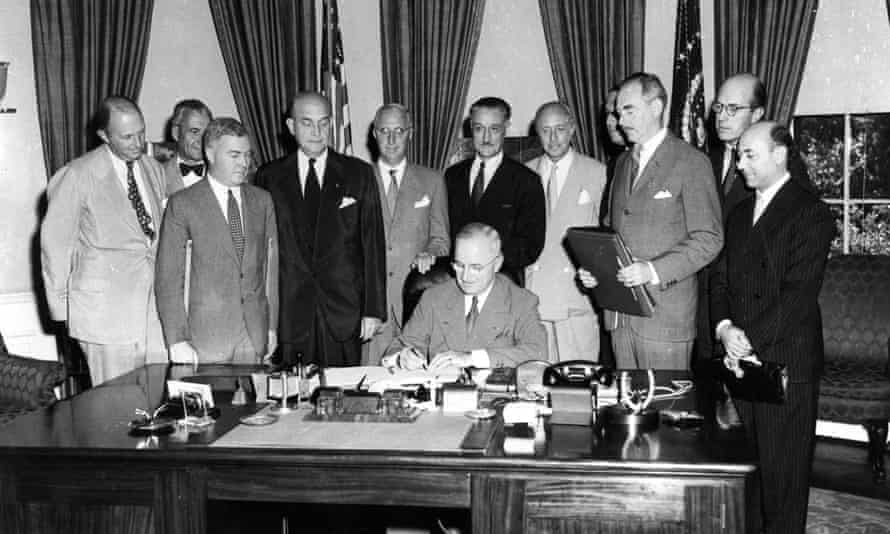
The crown jewels of Nato are its nuclear weapons. In theory, the three Nato nuclear powers – Britain, France and the US – coordinate the nuclear defence for the rest of the alliance. Nato maintains nuclear forces on the continent, but they are largely ceremonial. If Moscow lobbed a nuclear missile at Brussels, the initial response would come unilaterally from Washington since following actual Nato procedures involves laborious protocols. (The nuclear group in Nato would first have to confer and agree to respond, and then request Washington’s portion of the nuclear code in order to launch the missiles stationed on their territory.) Nuclear-capable aircraft in Belgium are flown and maintained by Belgians, as is the case in Germany, Italy and the Netherlands. But none of these weapons systems are on the same high alert that the American president is capable of activating without any other Nato member’s permission. Only France and Britain, which have their own fully independent nuclear forces, have the possibility of eliminating their enemies in a nuclear strike without consulting the White House.
Ever since its birth in 1949, the funeral toll for Nato has been sounded many times, especially by those who forget that crises are its lifeblood. The Alliance itself was very nearly still-born. At the end of the second world war, Franklin Roosevelt expected both western and Soviet troops to leave central Europe within two years. But western European statesmen wanted the US to provide a security guarantee while they rebuilt their economies.
There were many proposals for how this security pact could be configured. The American strategist George Kennan proposed a “dumbbell” system, in which the western Europe would have its own defence system, while Canada and the US had a separate one that could come to western Europe’s aid in the unlikely event of a Soviet invasion. The prominent liberal journalist Walter Lippmann argued that there was no point in the US stationing troops in Europe in a world in which nuclear weapons had rendered conventional forces redundant. But leading anti-communists such as Ernest Bevin and Dean Acheson rejected this vision. They knew that the Red Army, which had just vanquished the Nazis, was not only the strongest force on the continent, but also an alarmingly popular one in western Europe.
Instead, Bevin and his European counterparts formed what they called the Western Union, which extended the postwar Dunkirk treaty between France and the United Kingdom to include Luxembourg, the Netherlands and Belgium. When this organisation asked Washington to provide a binding security guarantee, American diplomats took control of the project, and steered it into what would become Nato, a much more expansive security pact that included 12 member states, with the US in the lead. At the time, the debate about “enlargement” was about whether or not to include states like Italy in the alliance. Kennan thought the idea of Nato extension into southern Europe “weakly provocative” toward the Soviet Union, and that it set the stage for limitless expansion. He believed Nato only made sense as a pact among what he saw as racially and culturally similar North Atlantic peoples, and bemoaned an alliance that would have the effect of freezing cold war battle lines across the middle of Europe.
From the start, Nato was unpopular with member publics. Harry Truman could not afford to risk mentioning his plans for the North Atlantic alliance to a war-weary American public in his first campaign for the presidency. French communists and nationalists – opposed on nearly every other issue – jointly protested France’s entry into Nato in 1949. There were enormous anti-Nato insurrections across Italy. The largest uprising in Iceland’s postwar history occurred when the island nation joined the alliance. An extensive repertory of Icelandic anti-Nato anthems and songs sprang up during the negotiations between Reykjavik and Washington. On the eve of Iceland’s Nato membership, the communist novelist and future Nobel laureate Halldór Laxness published The Atom Station, an Icelandic Remains of the Day, in which a young serving woman from the north witnesses the Reykjavik elite sell out the country to Nato officials behind closed doors.
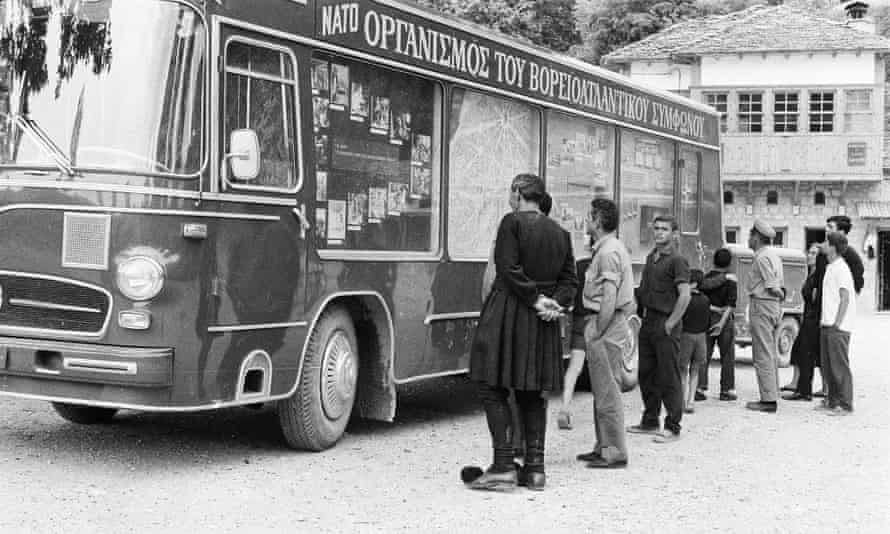
The first postwar decade was tumultuous for Nato. With Europe’s economic recovery in full swing, the conviction that the continent needed an American security guarantee was weakened. Truman’s Korean war showed how easily the US could become overextended. In response, western European leaders drew up plans for the European Defence Community, which would combine the fledgling armies of West Germany, France, Italy and the Benelux countries. But this plan for a European army fell apart almost as soon as it was floated. Britain saw the combined force as a threat to national sovereignty. The French government, meanwhile, was more worried about a resurgent Germany than a Soviet invasion. Paradoxically, then, this early drive for autonomy from Washington on the part of western European states ended up bringing them more tightly into the fold of Nato, which proved to be the only arrangement capable of plastering over their divisions.
Nato may have begun as a security stopgap, but it soon became a guarantor of western stability in ways beyond the imagination of its architects. For the US, massive defence budgets became a way of life, and the least controversial way to facilitate public spending in a postwar economy that still aimed at full employment. That the country was never fully reconciled to this permanent war posture is neatly captured in the ritual of nearly every postwar American president promising, and failing, to reduce US troop levels in Europe. Meanwhile, for western Europeans, American defence largesse allowed them to devote more of their surplus to their welfare states, in an effort to appease their more militant labour movements.
The political stability that Nato achieved in the 50s was never free from ruptures. In 1955, Washington ushered West Germany into the Alliance, to which the Soviets reacted with the creation of their own, anti-Nato security system, the Warsaw Pact. A year later, Nato wobbled badly when the Suez crisis exposed the divisions between members that wanted to cling to their colonial possessions and a Washington that was keen to win favour with Third World nationalists who might otherwise turn communist. (Belgium, France and the Netherlands had even initially wanted their colonies included in Nato, which was far too much for Washington.) Nato command had an ambivalent attitude toward the British empire. On the one hand, Nato helped accelerate imperial decline by, for instance, demanding Britain fulfil its obligations to station thousands of British troops on the Rhine, at the cost of more critical colonial nodes such as Singapore. But American strategists were also worried the British retreat from the resource-rich Middle East would leave behind a vacuum, which Nato tried to fill by spawning the Middle East Treaty Organisation (Meto), one of several failed attempts to replicate itself.
The 60s are remembered at Nato as a time of ongoing emergency. For years, Charles de Gaulle’s patience with the alliance had been on a short fuse. “Nato is a fake,” he declared in 1963. “Thanks to Nato, Europe is placed under the dependence of the United States without appearing to be so.” Three years later De Gaulle withdrew France – and its nuclear weapons – from Nato’s command. (This withdrawal was more theatrical than actual: France’s participation in Nato exercises and technology-sharing remained nearly unchanged and it was still a Nato member.)
De Gaulle’s decision was partly the result of his delusion about the status of France as a great power. But he also – more imaginatively – saw Russia as a natural part of Europe, one cordoned off by a cold war that he believed would one day be over. In De Gaulle’s view, Washington’s capitalism and Moscow’s communism were converging toward a remarkably similar technocratic society. He saw Nato as a deliberate American attempt to slow down history, in order to prolong the moment when Washington was the leading world power. But despite the uproar De Gaulle caused among cold war stalwarts, and the bevy of Nato obituaries that followed, the alliance was perhaps even strengthened by France’s semi-departure. It allowed Nato to more fully integrate West Germany into the alliance, and to sound the alarm for increased commitments from other member states.
In these decades, opposition to Nato was a rallying cry for the western European left, which viewed it not only as an institutionalised form of nuclear brinkmanship, but as a class alliance between American and European ruling establishments determined to shore up their defence as much against their domestic opposition – whether by spying on French communists, or rooting out the members of the German Red Army Faction who bombed Nato pipelines – as against the Soviets.
Nato was not particularly concerned about the domestic political arrangements of its member states, so long as they were implacably anti-communist. Portugal under Salazar’s dictatorship was welcomed into Nato in 1949, and in 1967, when fascist Greek colonels used Nato’s own counter-insurgency blueprints to overthrow a democratically elected government, the legal claim, led by the Scandinavian states, that it should exit the Alliance was never seriously entertained.
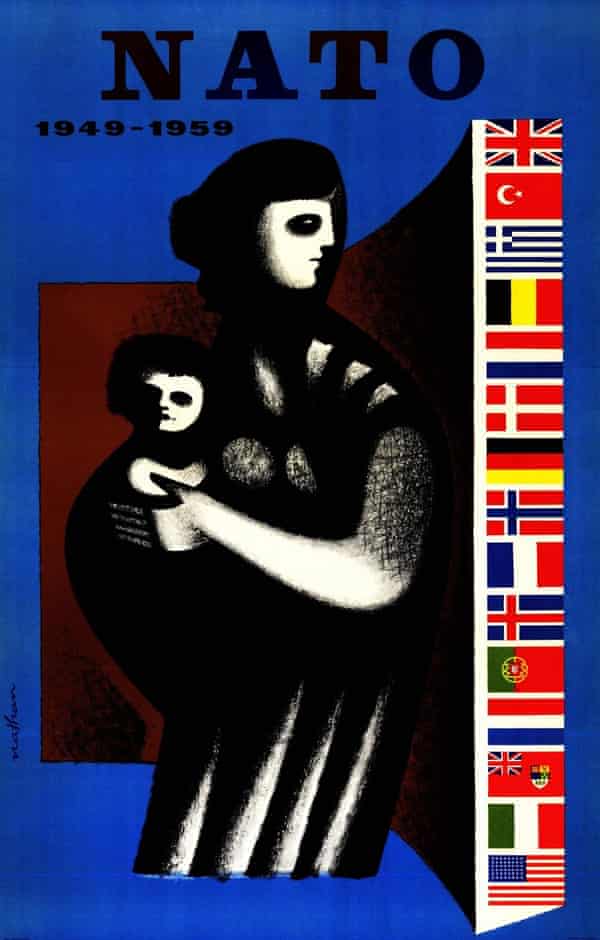
There have been more serious threats to Nato unity, however. Greece and Turkey violently clashed over Cyprus in 1974. More recently, in the wake of Nato’s 2011 intervention in Libya, militias backed by Turkey and Italy fought the French-backed Libyan army of General Haftar. Nato unity took another blow in 2018, when, after Turkey began besieging US and western European Kurdish allies in Syria, Emmanuel Macron declared the alliance “brain dead”. Nato also took a psychological hit during the presidency of Donald Trump, who liked to publicly question the alliance’s purpose and refused to mumble pieties about article 5 during a visit to Nato headquarters, albeit all while increasing US expenditure and troop levels in Europe.
But Nato’s most serious existential crisis came in the 1990s, when the raison d’etre of the organisation – the Soviet Union – collapsed. In this new environment, it was not clear even to Nato’s own functionaries what its future would be. All that remained was the prospect of janitorial twilight, with Nato helping to mop up and dismantle the Soviet Union’s nuclear arsenal. Not only had the organising spectre of the organisation vanished, but a series of new institutions in Europe – the European Union above all – seemed to proffer a European future of greater coherence and autonomy from the US. Even before the Soviet Union fell, there were proposals for new political arrangements, including François Mitterrand’s short-lived idea of a European Confederation that would pointedly include the USSR and exclude the US. In 1989, Michael Gorbachev appropriated De Gaulle’s old dream of a Europe that stretched from the Atlantic to the Urals, which he called a “common European home,” in which “a doctrine of restraint should take the place of the doctrine of deterrence.”
Several prominent participants and observers in the 1990s believed that Nato, its mission accomplished, would close shop. “Let’s disband both Nato and the Warsaw Pact. Let’s release your allies and ours,” Eduard Shevardnadze, the Soviet foreign minister gamely proposed to the US secretary of state in 1989. Later that same year, the Czech leader Václav Havel told George HW Bush that he expected American and Russian troops would soon be vacating central Europe. Prominent American strategists agreed. With the collapse of the Soviet Union, it was time for Europeans to take their security back in their own hands, with the US withdrawing its troops from the continent. “The Soviet threat provides the glue that holds Nato together,” John Mearsheimer, one of the US’s leading international relations theorists, wrote in the Atlantic Monthly in 1990. “Take away that offensive threat and the United States is likely to abandon the continent.” To glance at the output of Nato bureaucracy from the 1990s is to witness a sea of panicked position papers outlining ways to prolong the life of an ailing patient.
But Nato’s 1990s crisis turned out to be its greatest hour. Not only did it not shut down during the decade, it expanded. It did not fade into the background as a vestigial cold war organ, but became more active. “Nato must go out of area or it will go out of business,” became the mantra of Nato apparatchiks across the decade. In just a few short years, Nato went from being a primarily defensive organisation to a brazenly offensive one – from being a geopolitically conservative custodian of the status-quo to an agent of change in eastern Europe. How did this happen?
Advertisement
As the George HW Bush administration surveyed the ruins of the Soviet Union, they determined that the new challenge for Nato was not the nascent Russian Federation, but a unified Europe. “We must seek to prevent the emergence of European-only security arrangements which would undermine Nato,” read the draft of a leaked 1992 national security council memo. In its rhetoric, Bush’s administration was cautious about Nato expansion. But in practice, it was cold war triumphalist: over the vociferous protests of Gorbachev, Bush incorporated a newly unified Germany into Nato. Soon after, Nato’s training of Ukrainian troops began.
When Bill Clinton became president in 1992, the real difference was that the rhetoric of expansion matched the practice. Clinton presided over the 1999 entry of Poland, Hungary and the Czech Republic into Nato, and treated Russia as the wrecked state it was.
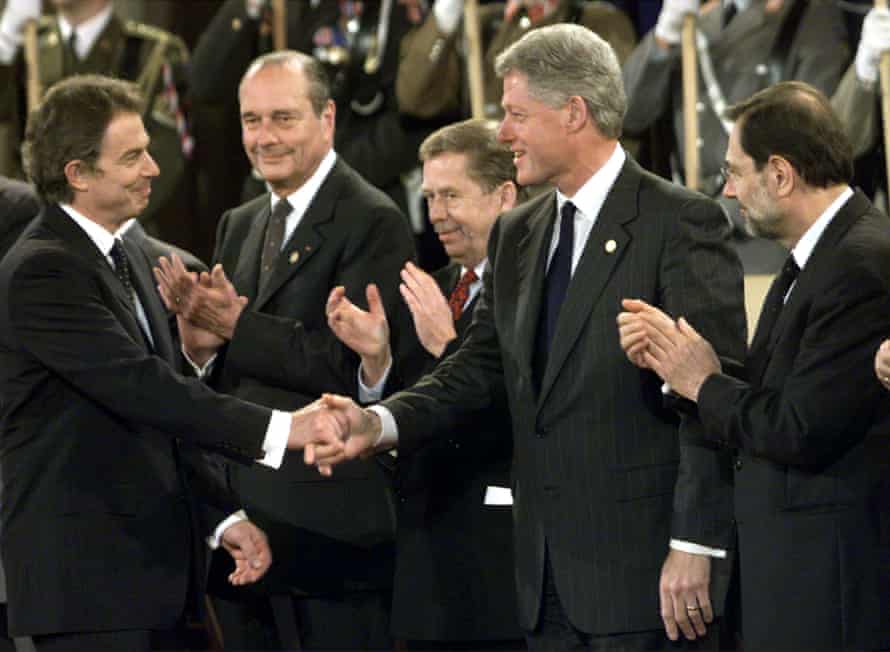
There was some irony in Clinton’s doubling down on Nato. In many ways he had appeared to be the ideal figure to shutter the alliance. On the campaign trail in 1992, Clinton had made rumbles about downsizing Nato in favour of newer, sleeker “rapid-deployment” UN military units. Initially, Clinton was sceptical of Nato’s extension eastward. “So let me get this straight,” he reportedly said to his national security staff on being briefed of the expansion plan. All the Russians would get “out of this really great deal we’re offering them” is an assurance “that we’re not going to our military stuff into their former military allies, who are now going to be our allies, unless we happen to wake up one morning and decide to change our minds?”
But Nato expansion was ultimately signed off on by Clinton – and avidly pursued by his administration for three primary reasons. The first was that it was pressed on the Pentagon by former states of the Warsaw Pact. For a country like Poland, Nato membership was the first step toward reorienting Warsaw back towards the wealthy west. “Let the Russian generals get upset,” the Polish leader Lech Wałęsa chimed to his US counterpart in 1993. “They won’t launch a nuclear war.” The second had to do with Clinton’s own domestic calculus, and how support for Nato membership would win votes from large eastern European émigré enclaves in the US rustbelt, not a minor consideration for an administration primarily concentrated on home affairs.
The final reason had to do with the crystallisation of the ideology of human rights in the 90s, when the US preponderance of power globally was so great as to make concerns about impinging on a foreign nation’s sovereignty beneath consideration. Many former Nato critics had come to embrace the organisation by the end of the cold war, seeing it as the only viable vehicle for their new programme of humanitarian intervention. By 1995, the secretary general of Nato was Javier Solana, who had authored the 1982 tract 50 Reasons to Say No to Nato, which had helped carry his socialist party to victory in Spain, and who was himself formerly on the US list of subversive agents.
The 1995 bombing of Bosnia and Herzegovina, and later Kosovo in 1999, were showcases of Nato’s newfound place in the post-cold war order. Not only did Clinton’s decision to bomb the former Yugoslavia circumvent the UN security council, and prove that the EU, and especially Germany, were incapable of solving security crises in their own neighbourhood. But it was also a show of force that arguably shook the Kremlin more than Nato expansion itself. The war was a preview of coming attractions: the reliance on technological, “no-fault” military operations that did not require US ground troops, and the expectation that Nato-led interventions could create instant US-aligned constituencies like the Kosovan Albanians, who continue to name their children after Clinton and Bush.
The Clinton administration’s faith in Nato expansion and Nato warfare reflected its faith in capital and markets. Nato, in this view, came to act as something like a rating agency that would declare portions of eastern Europe as safe zones for foreign investment and ultimately EU membership. “We will seek to update Nato so that there continues behind the enlargement of market democracies an essential collective security,” Clinton’s national security adviser, Anthony Lake, declared in 1993. This cocktail of markets and democracy talk, along with geostrategic interests, proved very difficult for American politicians to resist: it appeared to be a perfect marriage of realism and idealism.
Advertisement
By the end of the decade, only a zealous rump of cold warriors – from the American statesman Paul Nitze to the conservative historian Richard Pipes – still held out against Nato expansion. Earlier sceptics of Nato expansion, such as Joe Biden, toured eastern Europe and returned to Washington converts of the expansionist cause. Likewise, Republican opponents of Clinton’s domestic policy, such as Newt Gingrich – who himself had once borrowed $13,000 from his friends to take a sabbatical in Europe to write a novel about Nato (still uncompleted) – were in full accord about expansion, which was duly enshrined in the Republican manifesto, the “Contract for America”. Radicalising Clinton’s own position, they only wanted him to move faster.
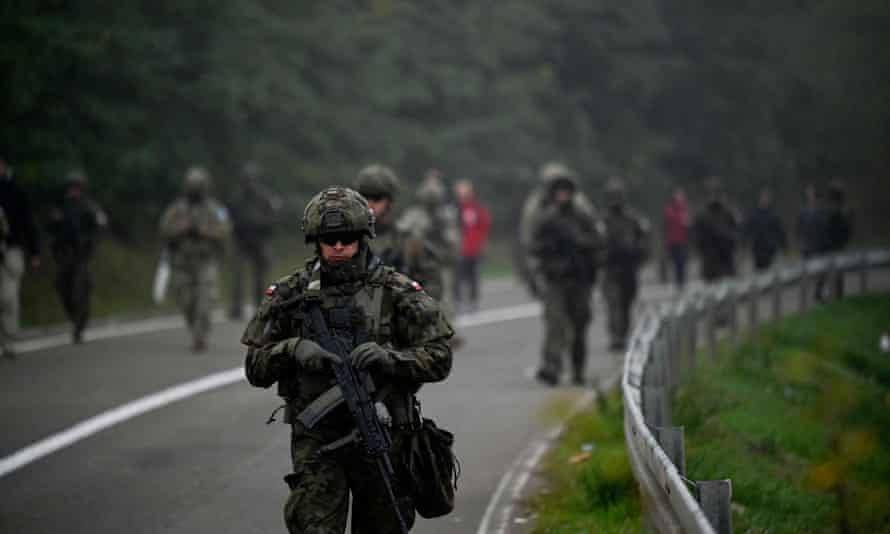
Ukraine became a special point of interest during the Clinton years, and was USAid’s third-largest recipient of funds during the 1990s, exceeded only by Egypt and Israel. Before Putin’s invasion it had received more than $3bn; since Russia went in the US has already given $14bn, and $33bn more has been promised. Nato training of Ukrainian troops sharply increased over time. Starting with Clinton’s military intervention in the Kosovo war in 1999, Ukraine’s troops could be counted in almost every US-led post-cold war operation, including in Afghanistan and Iraq. The Ukrainian army’s robust resistance to the Russian onslaught is perhaps less surprising than it should be: large segments of it are Nato-trained and capable of making effective use of Nato-grade weaponry.
Advertisement
By the time George W Bush came to power in 2001, Nato was still basking in the glow of its war in the Balkans, where it still today polices a statelet of its own making in Kosovo. In the wake of the attacks of 9/11, when the Bush administration invoked article 5 for the first time, Nato added the global coordination of counter-terrorism to its portfolio, all but turning a blind eye to Russia’s domestic anti-terror campaign, as well as Beijing’s first major actions against the Uyghurs in Xinjiang province. But while Bush shared Clinton’s faith in the inevitable triumph of the American way, he wanted to shed some of the pretence of the Nato alliance. If Washington was the only power in Nato that mattered, and humanity had already entered into a unipolar world order, what was the point of waiting for American desires to be seconded by Belgians?
Bush’s Iraq war was thus fought over the criticism of some Nato members, such as France and Germany, whose actual military forces Bush viewed as irrelevant. You were either with the US or against it in the Bush years, and quite evidently, the eastern Europeans were with the US, and Bush wanted them amply rewarded. Over the warnings of Germany and France, Bush thus saw no reason to heed Russian demands about not promising Georgia and Ukraine Nato membership, which he did in 2008. In this period, as eastern Europe and Washington grew closer, it was not lost on Warsaw, Budapest and Prague – where there were nationalists who were much more comfortable with US-style nationalism than the post-nationalism vaunted by Brussels – that Washington could also serve as a useful ally in their own disputes within the European Union.
Washington’s most steadfast allies in Nato today are Poland and the Baltics. If forced to choose between either the hegemony of Berlin or Brussels, or that of Washington, for eastern European leaders, Washington wins every time. Whereas Britain has specialised in hosting Russian capital, Germany in consuming Russian energy, and France has historically seen Russia as a potential strategic partner, Poland and the Baltics never cease to stress the threat to their hard-won sovereignty. Washington has come to share their view of Russia: it is no longer worth “resetting” relations with an unredeemable country. For many hawks in Washington, Russia needs to stay irredeemable if Nato is to continue pointing to the vast gulf that separates states under its wing from the barbarians at the gate. From this perspective, a strong, liberal, democratic Russia would perhaps have posed an even greater challenge to US hegemony in Europe than an autocratic, revanchist, but ultimately weak Russia.
If eastern European states are convinced that Nato safeguards their sovereignty, it would seem that the reverse applies to Europe more widely. Ever since the election of Donald Trump, when Angela Merkel announced that Europe may one day have to look after its own security, there has been an expectation that EU states would inch away from their US protectors, many of whom, at least in theory, would welcome the prospect of a stronger European partner. But in practice Nato often tugs Europeans away from their own self-declared interests. In 2010, the government of the Netherlands fell when the public rejected its lock-step obedience to Nato’s Afghanistan mission. Already under US pressure for forging closer energy ties with Russia, Germany may now need to placate Nato by sending heavy weaponry to Ukraine and cutting itself off from Russian energy altogether. This apparent split between European and US interests has continued to galvanise a handful of European thinkers. In 2018, Germany’s grand man of the left, Hans-Magnus Enzenberger, described Nato as a tributary system with member and associate states sending periodic offerings of soldiers for Washington’s wars. His French counterpart, Régis Debray, echoing De Gaulle, has called Nato “nothing more than the military and political subordination of western Europe by the United States”.
Advertisement
For years in Europe there has been mesmerisingly vague talk of a new initiative called the European Security and Defence Identity, which is somehow meant to emerge, like Athena, from the head of Nato. But Russia’s invasion of Ukraine has revealed how deceptive European steps toward autonomy are, and how deep-set the institutional lock of Nato is over the continent. “The idea of Europe’s strategic autonomy goes too far if it fosters the illusion that we can guarantee security, stability and prosperity in Europe without Nato and without the US,” the German foreign minister flatly declared already in 2020. If anything, Nato’s power and relevance is due to increase in the coming years, and the increase in European defence spending, which is still puny in comparison with Washington’s, only means that there will be more material under Nato purview. From the expanses of the Sahel to the banks of the Dnieper, there is ever less wriggle room under Washington’s supervision.
The trouble with the drive for European defence autonomy is not merely that – like the rollout of the European Defence Community in 1952 – it could backfire. But rather that, considering what the European Union is today, if it ever did succeed in taking a more militarised form, this would hardly be a rosy prospect. A competent EU army patrolling the Sahel for migrants, enforcing an elaborate repatriation system, and forcing regimes in Africa and Asia to continue being extraction points for its resources and receptacles of its trash, would only serve to clinch the status of “Fortress Europe” as a vanguard of xenophobic neoliberalism.
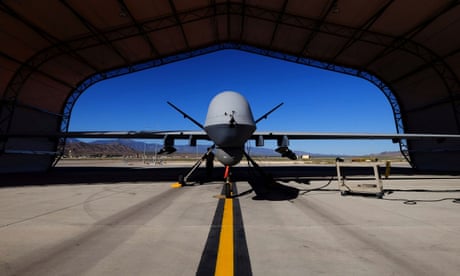
The English historian EP Thompson argued in 1978 that “Natopolitanism” was a form of extreme apathy, a pathology wrapped in an empty ideology that only knew what it was against. But Thompson was writing at a time when calls to abolish the alliance were not yet a weary incantation. In 1983, Nato’s placement of Pershing missiles in West Germany could still summon one of the largest protests in postwar German history. But if Nato’s institutionalisation of nuclear brinksmanship was once considered a lethal gambit by many citizens of Nato states, today Nato’s recent wars in Libya and Afghanistan have proceeded without domestic hindrance, despite their abject failure and having manifestly made the world more dangerous. Russia’s invasion of Ukraine has delivered Nato the grandest possible reprieve. Nobody doubts Nato’s effective support of Ukraine’s defence of its territory, though the war is not yet over. The tougher question is whether Nato is a cold war corset that has constrained the freedom of the west – and imperilled populations around the world – more than it has secured either. At a time when there has never been more need for an alternative world order, Nato seems to close the door on that possibility. Nato may be back. But it may be back only to hoist the old banner: “There is no alternative.”
Follow the Long Read on Twitter at @gdnlongread, listen to our podcasts here and sign up to the long read weekly email here.
This article was amended on 5 and 6 May 2022. The Dunkirk treaty was between France and the United Kingdom, not France and Germany; and an allusion to Sweden and Finland wanting to join Nato should have referred to Nordic states, rather than “Scandinavian states”.
